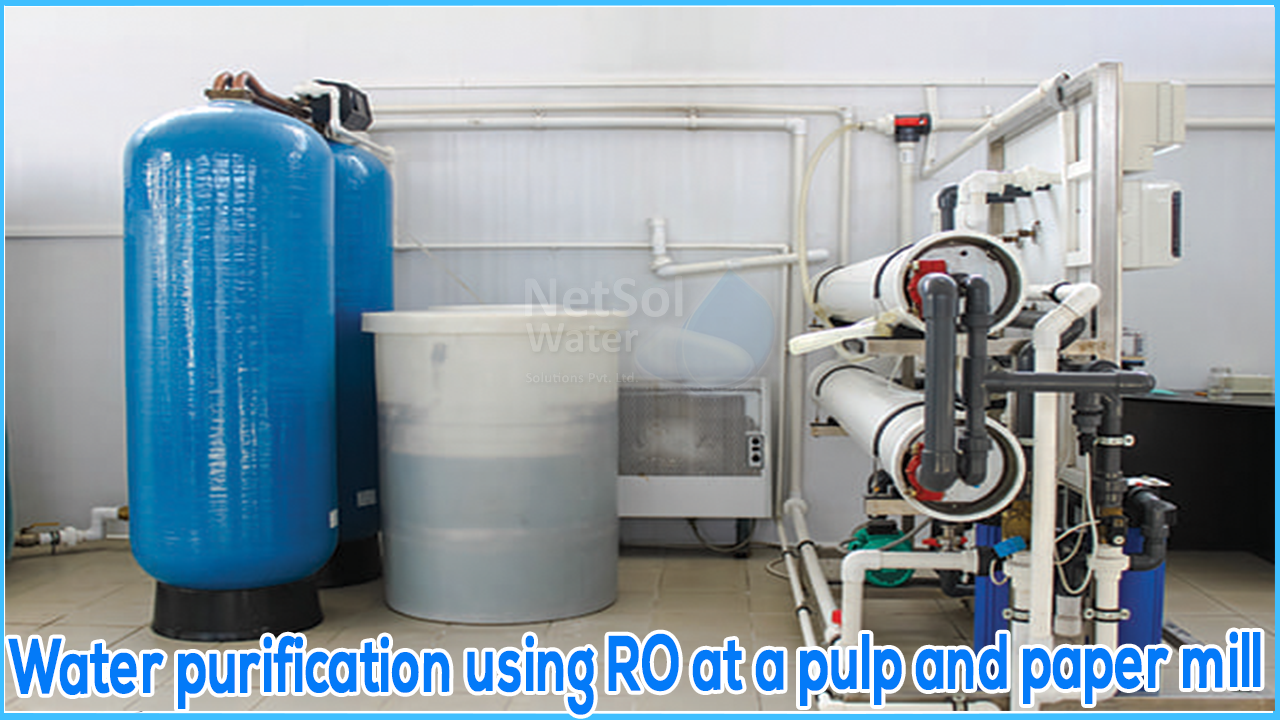NETSOL WATER is testing and designing a cutting-edge wastewater treatment system for a pulp and paper mill. The current system includes improved sedimentation (using coagulant and flocculent), lagoon aeration, sand filtration, and discharge. Because of the high cost of makeup water in the arid region, and because of a supply of high-quality boiler feed water required for a planned cogeneration facility, the client wishes to reuse treated water.
 One of the processes is The High Efficiency Reverse Osmosis (HERO) process to obtain high-quality water for reuse.
One of the processes is The High Efficiency Reverse Osmosis (HERO) process to obtain high-quality water for reuse.
This will result in a clean water stream (permeate) for reuse within the plant, as well as a concentrated brine (reject) containing the organics and total dissolved solids (TDS) found in the raw feed.
To remove hardness and metals, the HERO process pre-treats water with a special ion exchange resin. After that, the water is degassed to remove the alkalinity. After removing the hardness and alkalinity, the pH of the water is raised above 9 and fed into a reverse osmosis unit. Membranes foul in conventional reverse osmosis systems due to scale (divalent cation precipitates such as hardness, especially at high pH), organics (oil and hydrocarbons), and microbiological growth.
The HERO process eliminates these issues by removing the divalent cations and then running the RO at a high pH where oils are emulsified and biological growth is prevented.The percentage of clean water recovered from the feed is referred to as recovery, and the gallons of permeate produced per square foot of membrane per day is referred to as flux (gfd). Increasing recovery reduces the volume of reject that must be evaporated or disposed of. Increasing the flux lowers capital costs and improves effluent quality.
OBJECTIVES OF HERO PROCESS
The goals of using the HERO process is to obtain high-quality water at a high recovery rate clearly met. A total of 140 gallons of water can be treated using reverse osmosis (RO), yielding 136 gallons of product water (permeate) and 4 gallons of waste water (reject), for a recovery rate of approximately 97 percent. The addition of lime and soda ash is a more cost-effective method for removing high levels of hardness from large flows.
Hydrometrics has been hired to do the following in order to implement the water reuse option as soon as possible:
- 1. The design process is currently underway.
- 2. Assist in the installation of the lime-soda softening system.
- 3. Pilot-test the HERO process at the client's location with a side stream of about 15 gpm.
- 4. Design and supervise the construction of a full-scale HERO system after successful pilot testing.



